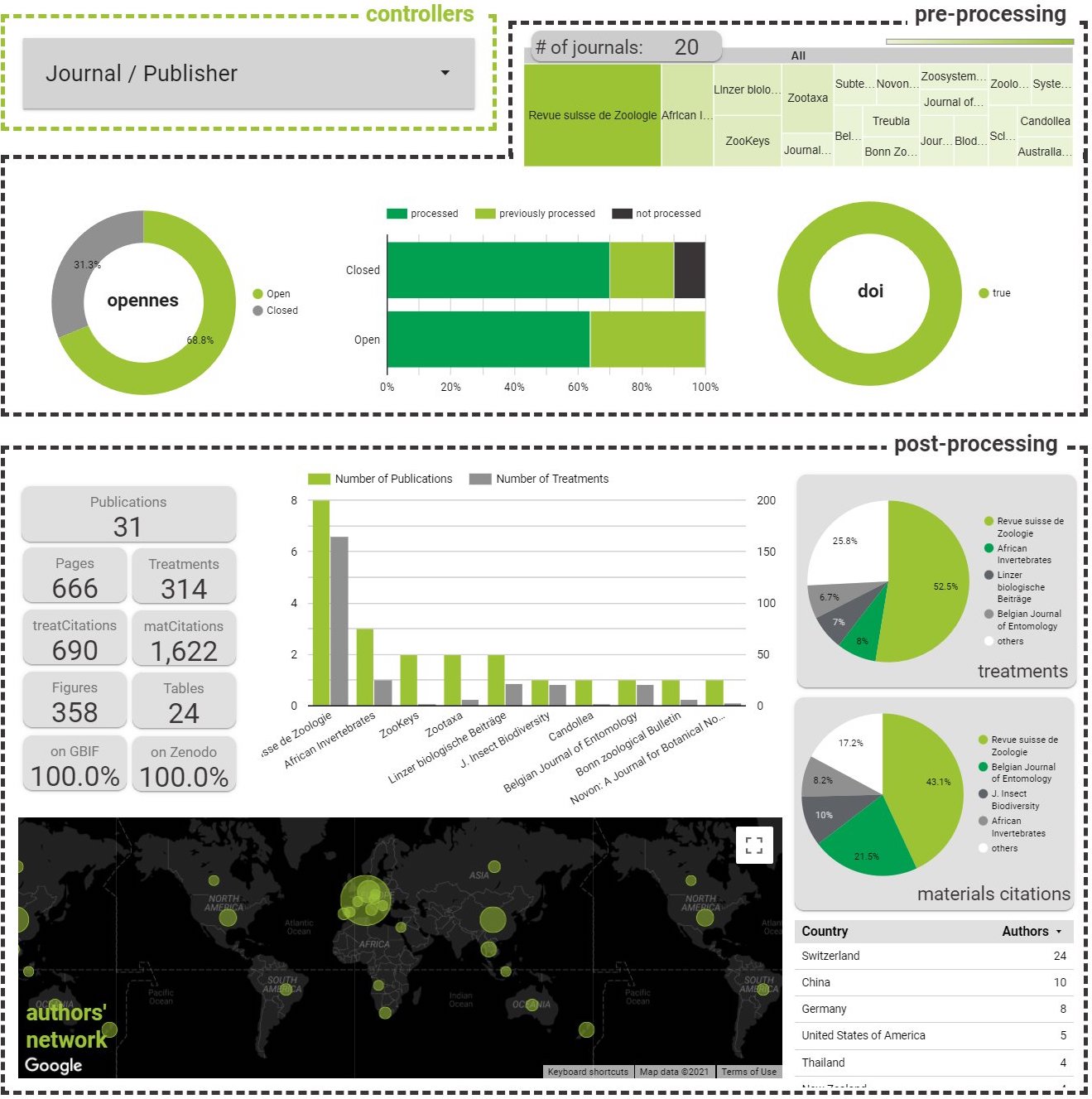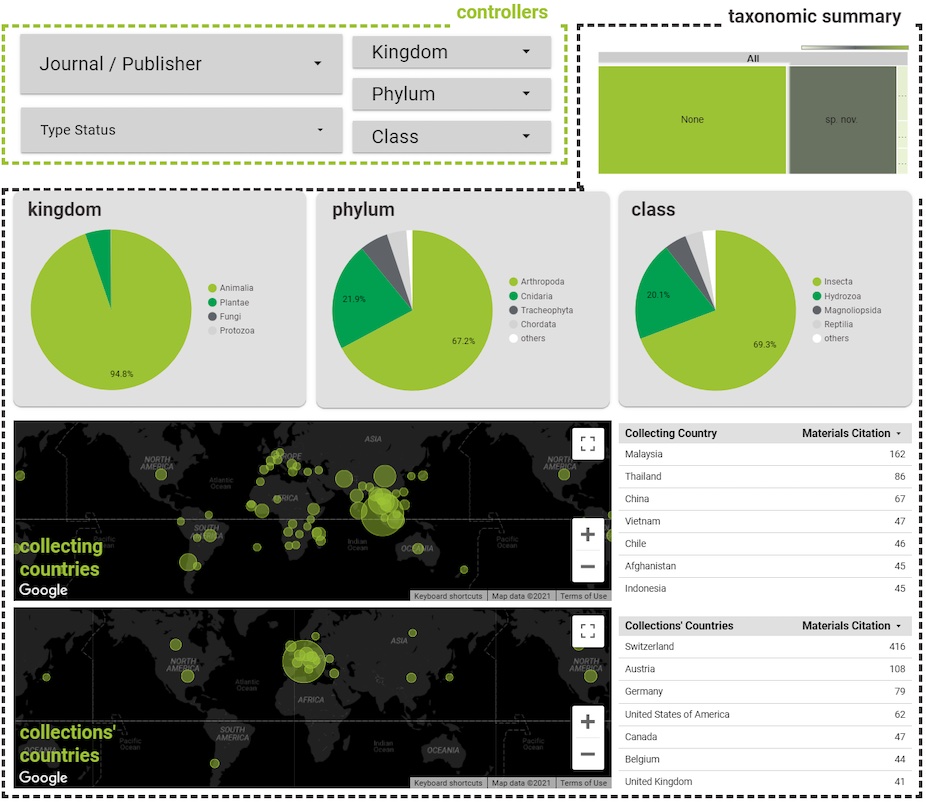Behind New Species Swiss-Made

At today’s meeting of the Swiss Systematics Society, the species of the year — a species discovered and described by a Swiss scientist — will be selected.
Currently 89 species have been listed out of 31 publications, of which 69% are open access and 31% closed access, and the Revue Suisse de Zoologie is the most prolific journal. New species are hardly ever the only taxonomic treatment of a publication. This is shown by the 314 treatments contained within these publications.

The conversion of the articles into digital accessible knowledge shows more in detail the output of the scientists. For example, 358 figures and 24 tables have been published based on 1,600 specimens examined.
A geospatial analysis shows the scientific network of the Swiss scientists based on the affiliations of their co-authors. The analysis of the material citations shows where the specimens have been collected and where the material is stored. This shows that the collecting efforts are focused on Southeast Asia, but also that scientists are active worldwide.
A taxonomic analysis shows that taxonomic efforts are dominated by studies on animals.
The data are provided by TreatmentBank with support by the Swissuniversities-funded project eBioDiv. All the data are open, well-documented and available in TreatmentBank, the Biodiversity Literature Repository, and are reused by the Global Biodiversity Information Facility.
All this work is a part of a project to liberate data in publications produced by and covering Swiss-based natural history collections, and to link material citations to specimens, and specimens back to the material citations. This is a work-in-progress and any recommendations and feedback are welcomed.
